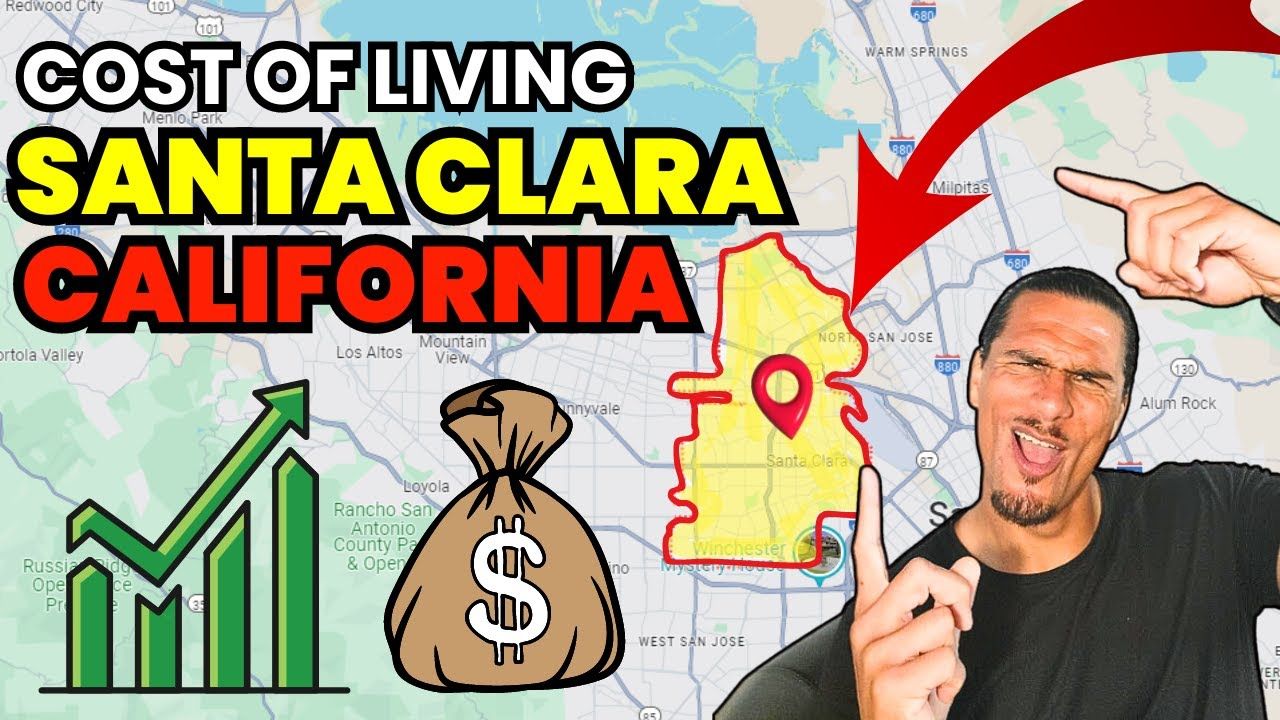Why is EVERYONE Moving Away from the SF Bay Area?!
Hey y'all — I'm Sirrom, your local real estate expert behind the Living in Santa Cruz & Monterey Bay channel. In this guide, we dig into the main reasons people are packing up and leaving the Bay Area in 2024. This article breaks down those same points with added context, statistics, and practical takeaways so you can understand whether now is the time to stay, sell, or make a move in San Francisco Bay area.
Table of Contents
- Introduction
- Why Are So Many People Leaving the San Francisco Bay Area?
- Where Are Bay Area Residents Moving To?
- Who’s Leaving the Bay Area — and Who’s Choosing to Stay?
- What This Means for Bay Area Buyers, Sellers, and Renters
- Practical Tips for Moving Out of the Bay Area
- Conclusion: What’s the Future of Living in the Bay Area?
- How to Decide If Moving Out of the Bay Area Is Right for You
- FAQ About Moving to San Francisco Bay Area
Introduction
The Bay Area remains an incredible place — innovation hubs, beautiful coastline, and world-class amenities. But over the last few years we've seen a significant wave of people leaving. The drivers are mostly economic and lifestyle-related: soaring housing costs, tax pressure, remote work, corporate relocations, congestion, safety concerns, and environmental risks like wildfires. At the same time, other regions (think Texas, Florida, Nashville, Raleigh) are becoming more attractive because of affordability and a perceived better quality of life.
Why Are So Many People Leaving the San Francisco Bay Area?
1. Skyrocketing housing costs
Housing in the Bay Area in 2024 is something else — the median home price has surpassed $1.3 million region-wide. In prime cities like San Francisco and Palo Alto, prices exceed $1.6 million. That kind of sticker shock makes it hard for first-time buyers, growing families, and even many middle-income households to stay long-term.

2. Cost of living and state taxes
San Francisco's cost of living index is roughly 95% higher than the national average. When everyday essentials, childcare, food, and services cost nearly double compared to other parts of the country, people start evaluating trade-offs. Layer on California’s highest-in-the-nation top marginal income tax rate (13.3%), and take-home pay feels the squeeze.
3. Remote work unlocked new choices
The pandemic taught employers and employees that a lot of tech and knowledge work can be done remotely. About 40% of Bay Area tech workers have shifted to remote work. That means someone earning a Bay Area salary can move somewhere with a much lower cost of living and keep their income — an attractive prospect for many workers.
4. Companies are relocating or expanding out of state
There’s been about a 15% increase in companies relocating or expanding outside California to places like Texas and Florida. Lower taxes, reduced operational costs, and more business-friendly environments are drawing employers — and once employers move or expand, employees are likely to follow.

5. Traffic, commute times, and overcrowding
Traffic in the Bay Area is notorious. Commute times have increased, in some cases adding 45 minutes to daily travel due to congestion and high population density. The Bay Area has one of the highest population densities in the country — over 7,000 people per square mile in some areas — which contributes to crowded public spaces, slower commutes, and a daily quality-of-life grind.
6. Rising property crime and safety concerns
Safety is top of mind for families and retirees. In 2024, property crimes in major Bay Area cities rose by about 10%. While crime statistics vary by neighborhood and time, perceived increases in theft, break-ins, and public disorder push some residents to seek safer communities.
7. Desire for more space — lifestyle shifts after the pandemic
Post-pandemic preferences pushed many people toward more space, yards, and quieter neighborhoods. In 2024, we saw a 20% increase in Bay Area residents purchasing larger homes in suburban and rural areas — often outside California where land and homes are more affordable.

8. Wildfires and environmental concerns
Climate is a real factor. With over 200,000 acres burned in California during recent wildfire seasons, many have experienced poor air quality, property damage, and the disruption that comes with evacuations. These risks make relocation to less fire-prone regions attractive for some homeowners.
9. Political climate and personal preferences
A 2024 survey found roughly 15% of those leaving the Bay Area cited dissatisfaction with local political climate as a significant reason for moving. For some people, local and state policy decisions — from housing to taxation — influence the choice to relocate.

10. Attractive alternatives — affordability and job growth elsewhere
Places like Texas and Florida have seen about a 30% uptick in inbound migration from California. Median home prices in many of those markets hover around $400,000 — a dramatic difference compared to Bay Area prices. Growing hubs like Austin and Miami reported job growth rates around 6% and 5% respectively in 2024, attracting former Bay Area professionals and entrepreneurs.
Where Are Bay Area Residents Moving To?
Common destinations include:
- Texas (Austin, Dallas, Houston) — lower housing costs, no state income tax, strong job markets
- Florida (Miami, Tampa) — coastal lifestyle, lower taxes, growing tech and finance presence
- Southern and mid-sized cities (Nashville, Raleigh, Charlotte) — better work-life balance and outdoor access
- Suburban and rural areas — for more space, yards, and quieter neighborhoods
Who’s Leaving the Bay Area — and Who’s Choosing to Stay?
Not everyone is leaving. The Bay Area still attracts new residents for jobs, culture, education, and lifestyle. People who value proximity to venture capital, leading universities, and specialized job markets often stay. Additionally, for those with deep family roots or businesses tied to the region, leaving isn't a simple option.
What This Means for Bay Area Buyers, Sellers, and Renters
If you live in the Bay Area and are thinking about your next move, consider these practical implications:
- Sellers: You may still get strong demand for well-priced homes in desirable neighborhoods. However, pricing and staging matter more than ever — buyers have options outside California.
- Buyers: Competition remains, but your strategy should include realistic budgets and pre-approval. Factor in long-term costs like state taxes and insurance (especially in fire risk zones).
- Renters: Rental rates are fluctuating—some neighborhoods have seen stabilization or slight decreases while others remain tight. Evaluate whether renting longer while you search elsewhere makes sense.
- Remote workers: If you can work from anywhere, compare total cost of living, quality of life, and career opportunities before deciding to move.

Practical Tips for Moving Out of the Bay Area
- Run a full cost comparison: salary vs. taxes vs. housing vs. living expenses.
- Research job markets in potential destinations — not all cities have equal opportunities in your field.
- Visit neighborhoods in person before committing. Remote photos can be misleading.
- Factor in non-monetary priorities: family proximity, schools, outdoor recreation, and air quality.
- Talk with a local real estate expert who understands both the Bay Area and destination markets to plan a smart move.
Conclusion: What’s the Future of Living in the Bay Area?
The Bay Area's mass exodus is real for some groups, driven primarily by affordability pressures, the rise of remote work, corporate relocations, and lifestyle preferences. But the region isn’t emptying out — it's evolving. If you’re contemplating a move, the smartest approach is to analyze finances, job stability, lifestyle priorities, and local risks (like wildfire exposure). Whether you stay or go, make a plan that aligns with both your short-term needs and long-term goals.
How to Decide If Moving Out of the Bay Area Is Right for You
If you have questions about buying, selling, or relocating out of (or into) the Bay Area, reach out. I'm happy to walk you through market data, neighborhood comparisons, and relocation logistics. You can call or text me at (650) 695-1919 or email sirrom@realtywithsirrom.com. I'm brokered by eXp Realty (DRE# 02137532), and I work with folks all over Santa Cruz, Monterey Bay, and the broader Bay Area.
FAQ About Moving to San Francisco Bay Area
Are housing prices in the Bay Area starting to drop significantly?
While some neighborhoods have softened, the Bay Area remains one of the most expensive housing markets in the U.S. Prices vary by city, neighborhood, and property type. Expect fluctuations, but an immediate, region-wide collapse is unlikely without major economic shifts.
If I can work remotely, is it always better to move out of the Bay Area?
Not necessarily. Moving out can dramatically improve affordability and lifestyle for many, but weighing career networking, family ties, healthcare, climate preferences, and long-term plans is essential. Sometimes a hybrid approach or a partial relocation (keeping a home here) makes sense.
Which cities are the most popular destinations for former Bay Area residents?
Austin (TX), Miami and Tampa (FL), Nashville (TN), Raleigh and Charlotte (NC), and various Texas metros top the list. Each city has different job markets, cultures, and costs — do your research.
How much do state taxes really impact take-home pay?
California’s top marginal rate (13.3%) affects higher-income earners more heavily, which can be a tipping factor. But total tax impact depends on your income level, deductions, and whether you move to a state with no income tax (like Texas or Florida).
Should I sell now or wait?
Timing a sale depends on your local micro-market, personal timelines, and where you’re going next. If you’re unsure, consult an agent who can provide comparative market analysis and relocation planning to help you decide.
Thanks for reading. If you want more Bay Area real estate insights, neighborhood breakdowns, or help with relocation planning, reach out — I’m here to help y'all navigate these decisions.





